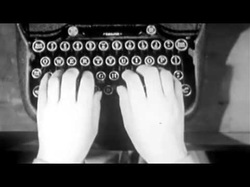Sooner or later, all columnists (or bloggers) on the eve of a deadline are brought to their knees. Eventually the blank gaze of a computer screen and an editor drumming impatient fingers on a far-off desk paralyses the columnist’s brain and both typing fingers. This week it’s been my turn.

Although this may seem an enviable state, it’s hell for the columnist: an empty mind is empty of everything which makes column-writing even remotely feasible: ideas, motivation, willpower and fear. Monkey-mind is the columnist’s only true friend.
However, I have not given in to the columnist’s usual urge to expound on the horrors of punitively regular deadlines. Instead, I have employed my temporary mental clarity to put together the following sure-fire ten-step writing guide for fellow sufferers of writer’s block.

You must begin with a mind free of all fear and preconceptions. You must ignore the claims from some quarters that writing necessarily involves “staring at a blank sheet of paper until drops of blood form on your forehead”. Dismiss from your mind the fourth form English teacher who red-inked “could do better” on your essays.
STEP 2: PREPARE YOUR WRITING ROOM
The “room of your own” which was so vital to Virginia Woolf is no less important for the columnist. The right desk, writing implement, paper, lamp, and inspirational verse pinned to the wall can make the difference between a merely good column and a great one. Take seriously Cyril Connolly’s warning that “there is no more sombre enemy of good art than the pram in the hall”: banish children from your room and its environs. In particular, access ways to the refrigerator and the coffee pot should be cleared of infants. Do not proceed to the next step until all your pencils have been honed to a fine point and scented candles gently illuminate your soundproof writing room.
STEP 3: FIND COMPANY AND INSPIRATION
A writer gains inspiration from the companionship of others and learns much by observation. It’s decades too late to join Hemingway’s crowd at Les Deux Magots cafe in Paris, but visit local cafes anyway to watch and eavesdrop on people who have real lives. Jot down your observations on napkins, place mats or the back of your hand. Even if you only gather enough material for a haiku, it’s better than nothing.
STEP 4: GET A LIFE
A tough step this one: you must at least attempt to live a life beyond the confines of your writing room. Try a headlong plunge into true social engagement - parties, festivals, team sports, committee work and so on. For reasons outlined in Step 2 above, you need to avoid child-friendly environments like schools and play centres. Ideally, you should become involved with something exotic or difficult, or both - wintering at Scott Base for example.
STEP 5: KEEP A JOURNAL
A journal is a vital part of writing a your column. It’s the place where you describe the richness and depth of your interior life and transcribe all the notes you have taken in far-flung, difficult-to-access places around the globe. You must not use any old notebook. Take as much time as you need to find the most exquisitely bound volume with the creamiest of pages.
STEP 6: READ WIDELY
The very best writers are also readers. This step requires you to read widely and deeply - history, biography, novels, poetry, the Women’s Weekly, Playboy (for the articles), cereal packets and beer mats. Much idle-seeming browsing of bookshops and late mornings tucked up in bed with a book may also be required.
STEP 7: LEARN THE CRAFT
At this point, you should have kayaked the Amazon and read Beowulf in Old English, have a perfect journal, a perfect writing room and indulged in plenty of social activity. If so, you might feel ready to embark on a column. Not so. Next, you must learn all there is to know about writing technique. Search on Google for “the craft of writing” to get a glimpse of the enormous task ahead of you. You should get 46,100,000 hits - at least half of which will contain vitally important writing tips and hints.
STEP 8: CLEAR THE DECKS
Now surely you are ready to begin writing your column? Alas, nothing could be further from the truth. See what happens when you sit at your desk for more than 10 seconds. You will be struck by the sudden realisation that the fridge needs defrosting or that you owe your Mum a phone call. Unless you tweeze your eyebrows, walk the dog and marinade the chicken for dinner you will find it impossible to concentrate on your column. This vital step insists that you clean the bathroom grout with a toothbrush before you attempt to write.
STEP 9: FACE THE AWFUL TRUTH
This step - the most difficult of all - demands ruthless honesty. It is now that you must face the fact that you would prefer to do anything, anything at all, rather than actually write a column.
STEP 10: THROW AWAY THE KEY
You will need the help of a compassionate friend to complete this step. They will need a strong stomach and weak ears. Ask your friend to drag you into your writing room and PREVENT YOUR ESCAPE until your conscious desire to write a column triumphs over your unconscious fear of the blank page.
That’s it - the whole process in a nutshell. I’m thinking of expanding my methodology into a book. As soon as I find a friend willing to lock me in a room and ignore the screaming, I’m going to get started.
 RSS Feed
RSS Feed

